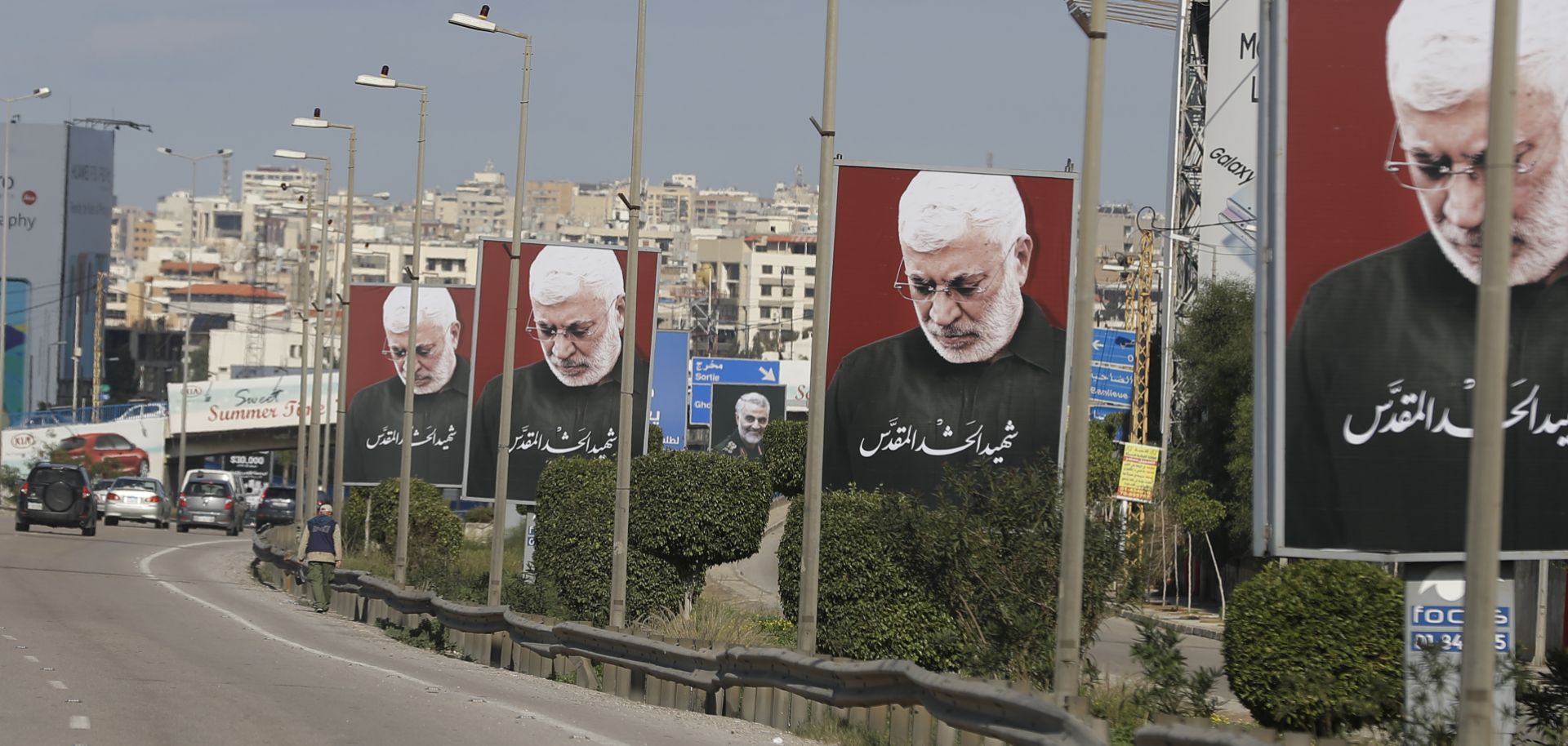GLOBAL PERSPECTIVES
Reflections on the Life and Death of an Iraqi Militant

Jan 20, 2020 | 09:45 GMT

Portraits of Iraqi militia leader Abu Mahdi al-Muhandis line a street in Beirut on Jan. 11, 2020. As much as the death of Maj. Gen. Qassem Soleimani in a U.S. missile strike inflamed passions in Iran, the killing of al-Muhandis in the same operation had similar effects in Iraq, where he was a widely known and respected militia leader.
(JOSEPH EID/AFP via Getty Images)
Highlights
- Iraqi militant Abu Mahdi al-Muhandis was killed Jan. 3 in the same U.S. drone strike that killed Iranian Maj. Gen. Qassem Soleimani.
- Iran trained al-Muhandis and other dissident Iraqi Shiites to fight against Saddam Hussein. They would go on to attack U.S. targets in the Middle East before joining an implicit U.S.-Iranian alliance against the Islamic State.
- The fight against the Islamic State and the Iran nuclear deal offered Washington and Tehran a chance to ease tensions between them. But once again, they would fail to take advantage of the opportunity, and the killings of Soleimani and al-Muhandis further dim the prospect of ending their feud.
Subscribe Now
SubscribeAlready have an account?
